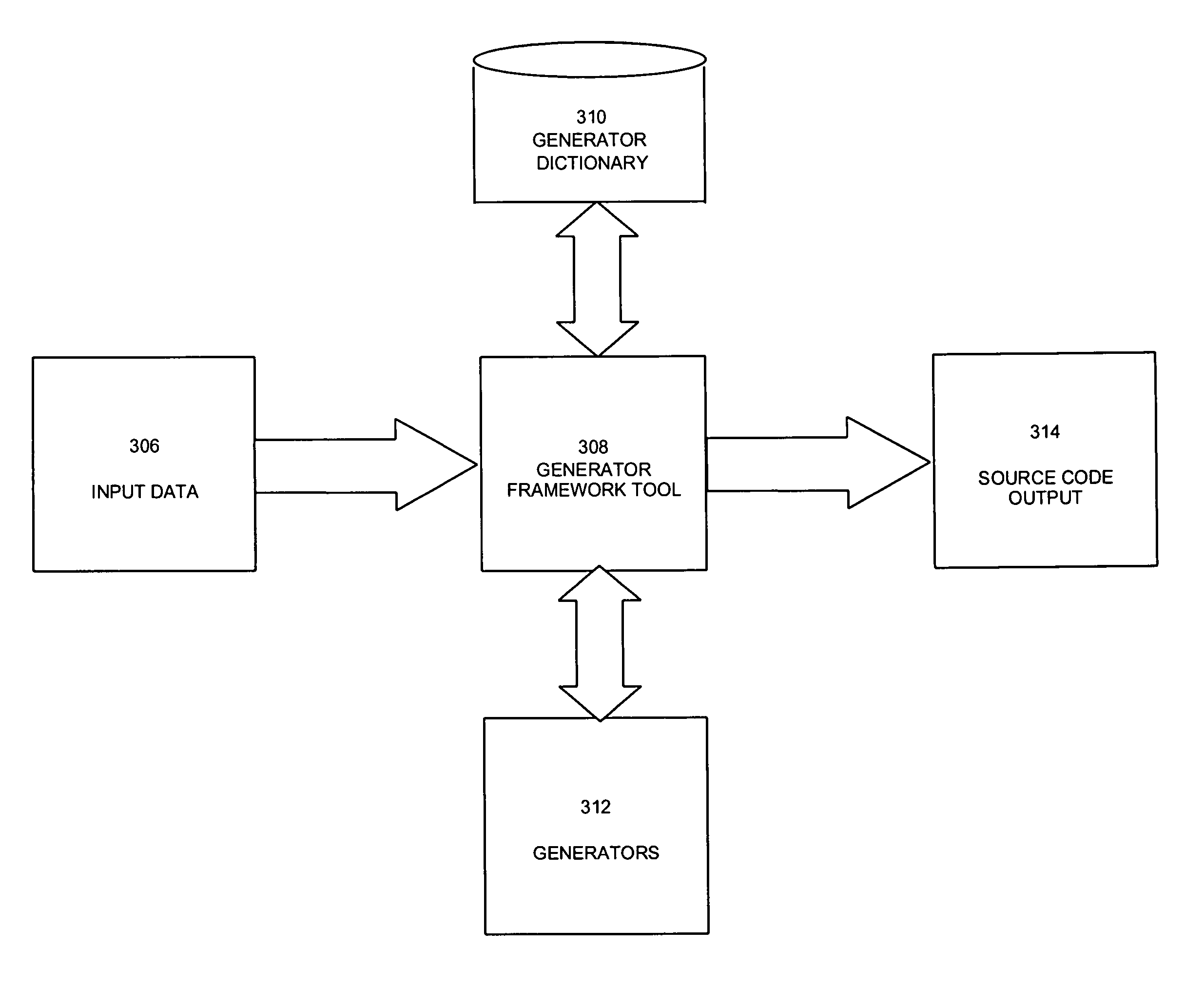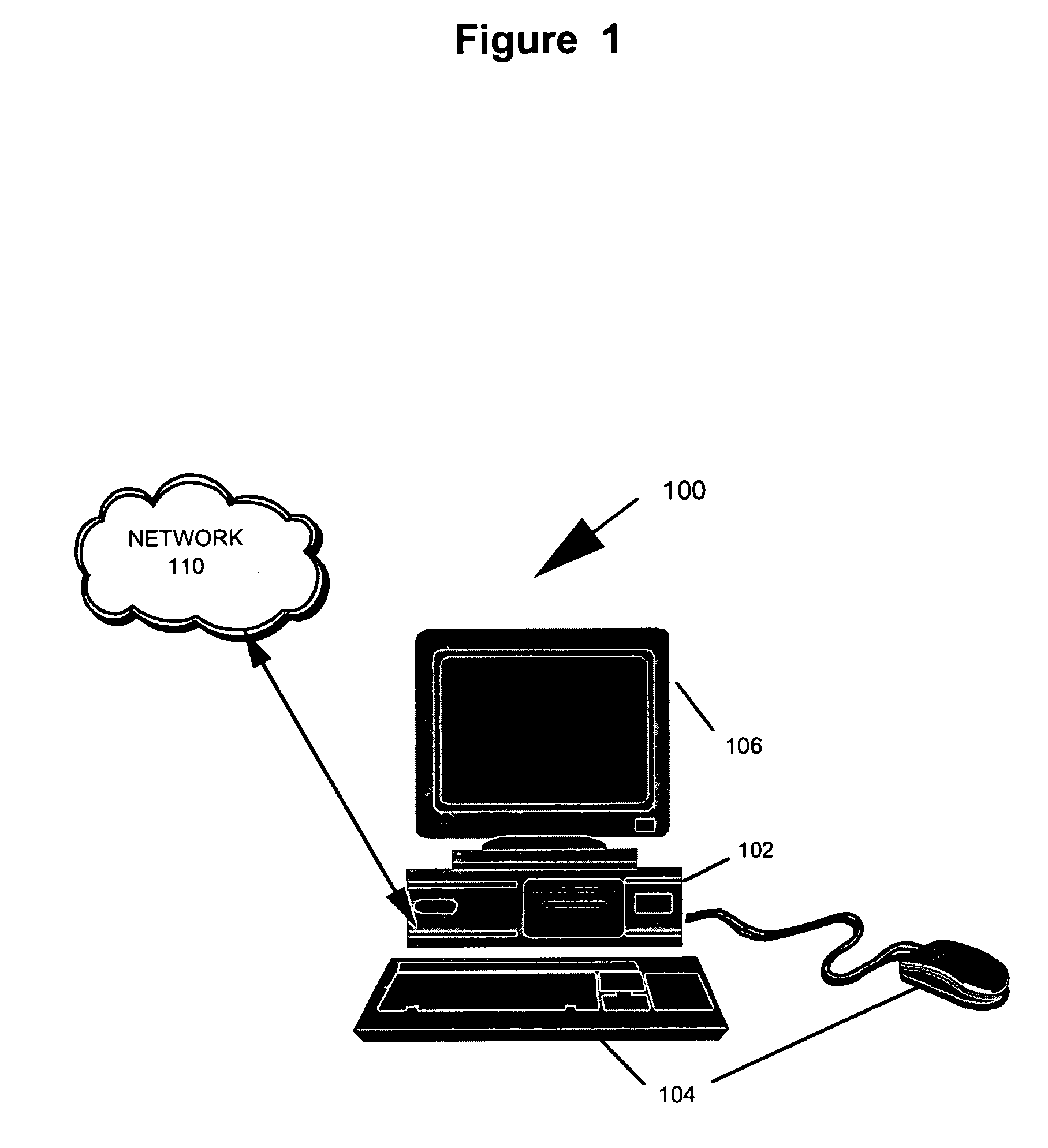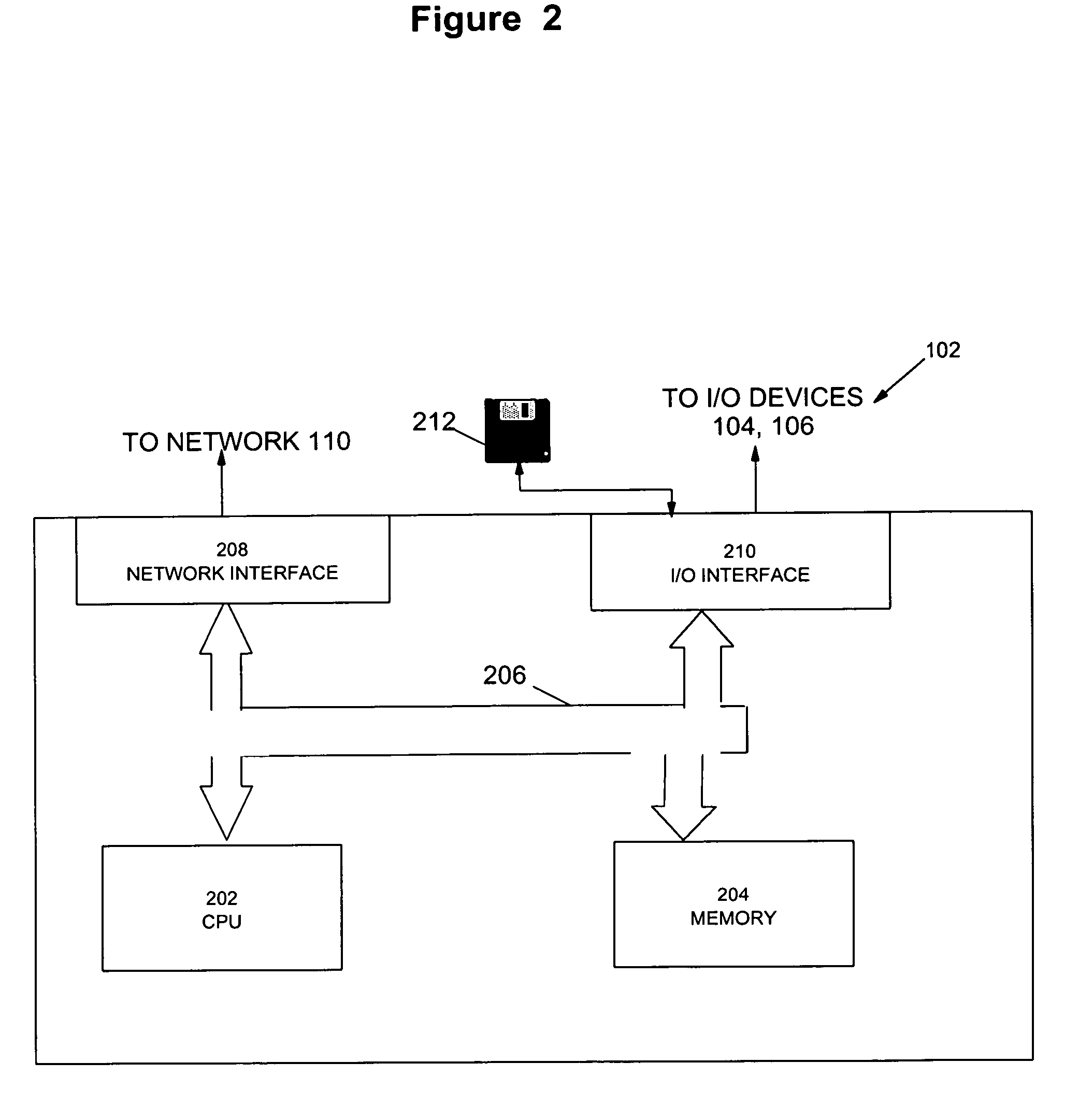Framework for code generators
a generator and code technology, applied in the field of code generation, can solve the problems of increasing the time to develop applications, increasing the complexity of applications, and affecting the quality of code generated, so as to facilitate customization of generated code, and modify or extend the capabilities of the code generation tool
- Summary
- Abstract
- Description
- Claims
- Application Information
AI Technical Summary
Benefits of technology
Problems solved by technology
Method used
Image
Examples
Embodiment Construction
[0036]Throughout much of the remainder of the specification the exemplary embodiment discussed involves the input of an Enterprise JavaBean™ (“EJB”) into a code generating framework embodying aspects of the invention. As persons of ordinary skill in the art will appreciate, an EJB may result in the generation of source code for several object classes depending upon the characteristics of the EJB and the environment in which the source code to be generated is deployed. For example, an EJB may be a session bean or an entity bean. Moreover, an entity bean may manage its own persistence (i.e., bean managed persistence (BMP)) or require a container to manage its persistence (i.e., container managed persistence (CMP)). These exemplary characteristics partially determine the number and structure of source code object classes that require creation. Each source object class created may include various fields and methods. Each method includes a method body which defines the operations perform...
PUM
 Login to View More
Login to View More Abstract
Description
Claims
Application Information
 Login to View More
Login to View More - R&D
- Intellectual Property
- Life Sciences
- Materials
- Tech Scout
- Unparalleled Data Quality
- Higher Quality Content
- 60% Fewer Hallucinations
Browse by: Latest US Patents, China's latest patents, Technical Efficacy Thesaurus, Application Domain, Technology Topic, Popular Technical Reports.
© 2025 PatSnap. All rights reserved.Legal|Privacy policy|Modern Slavery Act Transparency Statement|Sitemap|About US| Contact US: help@patsnap.com



